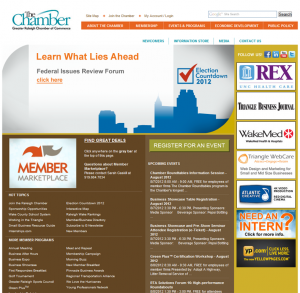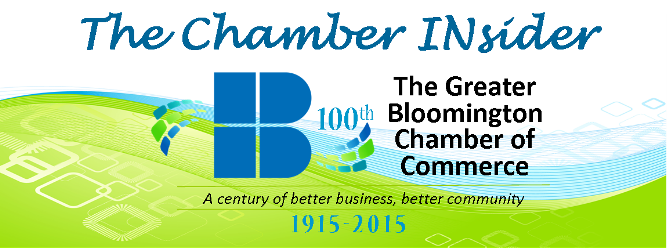I came across this blog while conducting some bench marking for a marketing project I’d undertaken. Blog author, Phil Buckley, was able to succinctly drill down to the main point behind my project: Chamber membership makes GREAT sense and should be viewed, at least in part, as (very) SMART advertising/marketing. Brilliant!
Here’s Phil’s blog:
When you run a brick and mortar business one of the places you would like to be listed at is your local Chamber of Commerce.
The links that come from your Chamber of Commerce site offer two real values. First is a local citation that is a trusted organization that is over 100 years old. Second is a link that has the potential to bring both customers and better rankings. I’ve looked at about 10 chamber of commerce pages and noticed some strengths and some areas that could be improved.
Raleigh, North Carolina has a very typical Chamber page. It has a few featured members, some news and a way to search their membership for companies. What I want to focus on is what a company can get from a Chamber of Commerce membership that impacts their rankings in the search engine results.
As with almost any website, the Raleigh Chamber’s homepage offers the biggest bang for your link building buck.

There are only 21 outbound links on their homepage. According to Open Site Explorer, the homepage has high page authority (73/100) and domain authority (67/100). Those are exactly the type of pages you want to get back links from. The fact that they are not properly canonicalized makes the link even better than it first appears. The page metrics are almost as strong for the domain without the www.
A link from the homepage of Raleigh’s Chamber of Commerce website is going to pass 4.6 MozRank to your website. That’s extraordinary. There are very few opportunities to get such a powerful link that is viewed by Google as natural. Those companies who have their businesses highlighted in the right rail have made a smart investment.
But what if you don’t have the budget to put an ad on your Chamber of Commerce homepage? There may be additional opportunities that are slightly deeper in the site, but still a step up from your basic listing.
Member directory
Many visitors will make their way to the member directory to see if a business is listed or to search for a business in a specific niche. As you can see from the screenshot on the right, there is not a single member taking advantage of the second best opportunity on the site.
The member directory has only 3 outbound external links. The MozRank passed from this page is 3.39 That doesn’t mean that a link from that page is 75% as good as the homepage (because it’s a logarithmic scale) but it’s still an excellent backlink.. I would imagine that the opportunity to get your company listed on this page would cost significantly less than the homepage, and the link love is immediate for your website.
The drop off
If all you’re doing is filling in the details of your business on Chamber’s website, you’re missing out. By the time you drill down to that level, those pages are not sending any MozRank for the link you have included.
Good enough isn’t good enough
Like most everything else in life, the standard version isn’t giving you the best bang for your buck. You need to step up your game if you want to outrank your competitors.
Joining your local Chamber of Commerce is a smart move. Joining and then taking advantage of the additional exposure, traffic, branding and backlink juice from the front page is even smarter.
Here’s what I found across the US Chamber of Commerce websites:
Every Chamber of Commerce site is different, so make sure you do your homework first.If I was an advisor to a Chamber of Commerce I would suggest:
- Let your members know about the linking opportunities available from your website
- Make sure you have areas available for “featured members” to upgrade to.
- Try to construct your site so that even the basic membership offers a valuable backlink
If I were advising a local company I would suggest:
- Get your company on the homepage
- Get your company on the directory page
- Think of the Chamber as an advertising opportunity. Don’t just send in boilerplate and wait for magic to happen.







